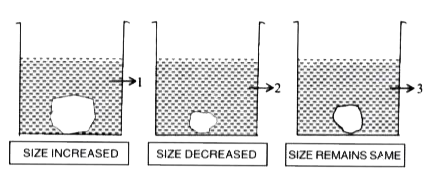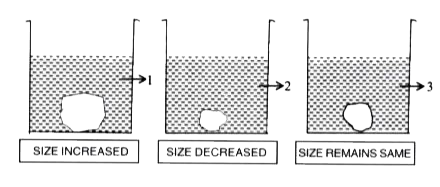Mention the constituent of food if the end result of the test shows :
Turning blue-black after adding iodine solution.
Step by step video & image solution for Mention the constituent of food if the end result of the test shows : Turning blue-black after adding iodine solution. by Biology experts to help you in doubts & scoring excellent marks in Class 9 exams.
Updated on:21/07/2023Topper's Solved these Questions
- DIGESTIVE SYSTEM BOOK - ICSECHAPTER - DIGESTIVE SYSTEM EXERCISE - REVIEW QUESTIONS (JUMBLED SPELLINGS)
8 Videos
- CELL:THE UNIT OF LIFE BOOK - ICSECHAPTER - CELL:THE UNIT OF LIFE EXERCISE - TOPIC 3(5 Mark Questions )
14 Videos
- DISEASES : CAUSE AND CONTROL BOOK - ICSECHAPTER - DISEASES : CAUSE AND CONTROL EXERCISE - Review Questions (D. LONG ANSWER TYPE)
5 Videos
Similar Questions
Mention the constituent of food if the end result of the test shows :
Ash that does not burn after continued heating
View SolutionMention the constituent of food if the end result of the test shows :
White to yellow and yellow to orange colour, after adding ammonium hydroxide.
View SolutionMention the constituent of food if the end result of the test shows :
Blue green to deep red with appearance of precipitate when added to Fehling solution.
View SolutionMention the products formed in the following
(i) Zinc oxide is treated with excess of sodium hydroxide solution
(ii). Iodine is added to a solution of stannous chloride.
View SolutionA reddish pink substance on heating gives off a vapour which condenses on the sides of the test tube and the substance turns blue. It on cooling, water is added to the residue then, it turns to its original colour. The substance is:
View SolutionWhen compound (A) is treated with conc. H2SO4, a reddish brown colour gas (B) is evolved. To this solution, a solution of (C ) is added slowly from the side of the test tube, a blue ring is obtained at the junction of two layers due to formation of (D).
Compound (D) has formula :
View SolutionThe reaction An+CuSO4→ZnSO4 goes completely to the right. In an experiment, 10.0 g of Zn was added to 200 " mL of " CuSO4 solution. After all the Cu was precipitated, it was found that not all the Zn had dissolved. After filtration, the total weight of the solid at the end of the reaction was 9.810 g. Calculate.
(a). The weight of copper deposited and,
(b). Molarity of CuSO4 in the original solution.
View SolutionA candidate in order to study the process of osmosis has taken 3 potato cubes and put them in 3 different beakers containing 3 different solutions. After 24 hours, in the first beaker, the potato cube increased in size, in the second beaker, the potato cube decreased in size and in the third beaker there was no change in the size of the potato cube. The following diagram shows the result of the same experiment :

Give the technical terms of the solutions used in beakers, 1 , 2 and 3 .
View SolutionA candidate in order to study the process of osmosis has taken 3 potato cubes and put them in 3 different beakers containing 3 different solutions. After 24 hours, in the first beaker, the potato cube increased in size, in the second beaker, the potato cube decreased in size and in the third beaker there was no change in the size of the potato cube. The following diagram shows the result of the same experiment :

Write the specific feature of the cell sap of root hairs which helps in absorption of water.
View Solutionp-Amino-N,N-dimethylaniline is added to a strongly acidic solution of X. The resulting solution is treated with a few drops of aqueous solution of Y to yield blue colouration due to the formation of methylene blue. Treatment of aqueous solution of Y with reagent potassium hexacyanoferrate (II) leads to the formation of an intense blue precipitate. The precipitate dissolves on excess addition of the reagent. Similarly, the treatment of the solution of Y with the solution of potassium hexacyanoferrate (III) leads to a brown colouration due to the formation of Z.
Q. Compound X is
View Solution
